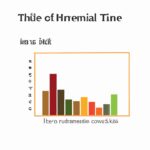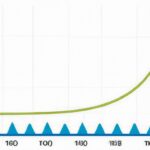The Theil index is a statistical measure used to quantify inequality within a particular population or dataset. It is named after economist Henri Theil, who developed this index as a tool for analyzing income inequality. The index calculates the overall inequality by taking into account both the average income or variable being measured and the distribution of that variable across individuals or groups. The Theil index ranges from 0 to 1, where 0 indicates perfect equality (everyone has the same income or value) and 1 represents complete inequality (one person or group possesses all of the income or value). It is an important tool in the field of economics and social sciences for understanding and analyzing inequality within a society or system.
(Theil index)
The Theil index is a statistical measure that is commonly used to measure income inequality within a population. It was developed by Dutch economist Henri Theil in the 1960s. The index provides a numerical representation of the level of inequality within a given dataset or population. The Theil index is a population-weighted measure that takes into account both the distribution of income across different individuals or groups and the size of those groups within the overall population. It provides a single number that quantifies the extent of income inequality, with higher values indicating greater levels of inequality. Mathematically, the Theil index can be represented as the sum of the individual contributions of each entity or group to the total inequality within the population. These individual contributions are calculated by taking the natural log of the ratio of each entity’s income or wealth to the population average, and then multiplying it by the weight or size of that entity within the population. By using this approach, the Theil index captures inequality at both the individual and group level, providing insights into the overall distribution of income. It can be helpful in comparing inequality across different populations or over time, as well as in understanding the impact of policy changes or economic factors on income inequality. It is worth noting that the Theil index is a relative measure of inequality, meaning that it does not provide information about the absolute level of income or wealth within a population. Instead, it focuses on the disparities and relative differences between individuals or groups. In conclusion, the Theil index is a widely-used statistical measure that quantifies income inequality within a population. By taking into account both the distribution of income and the population size, it provides a useful tool for understanding and comparing levels of inequality across different groups or over time.Calculation
The calculation of Theil index involves a series of mathematical steps that aim to measure income or wealth inequality within a given population or group. This index provides valuable insights into the distribution of resources and helps policymakers, researchers, and analysts understand the disparities that exist in society. Let’s dive into the details of how the Theil index is calculated. To calculate the Theil index, it is important to start by defining the population of interest. This could be a specific country, a region, or a particular group within a larger population. Once the population is defined, data on income or wealth distribution must be collected. This data can be obtained through household surveys, tax records, or other relevant sources. The calculation of the Theil index typically involves two main steps: the decomposition of the total inequality and the aggregation of individual inequalities. The first step in calculating the Theil index is the decomposition of the total inequality. This involves breaking down the inequality measure into two components: the within-group inequality and the between-group inequality. The within-group inequality measures the disparities that exist within each group or category, such as different income brackets or socio-economic classes. The between-group inequality, on the other hand, captures the disparities between these groups. By understanding both components, we can gain a more comprehensive understanding of the overall inequality. Once the total inequality is decomposed, the second step is to aggregate the individual inequalities. This is done by assigning weights or probabilities to each group or category within the population. These weights reflect the relative importance or size of each group. The individual inequalities are then multiplied by their corresponding weights and summed up to calculate the aggregate inequality measure. The specific formula for calculating the Theil index may vary depending on the field or context in which it is used. However, a common formula used is the exponentiated form of the mean logarithmic deviation. This formula takes into account the natural logarithm of the ratio between actual incomes or wealth and average incomes or wealth within a specific group or category. After these calculations are performed, the Theil index is obtained. The index ranges from 0 to 1, where 0 represents perfect equality and 1 represents maximum inequality. A higher value indicates a more unequal distribution of resources within the population. In conclusion, the calculation of the Theil index involves decomposing the total inequality measure into within-group and between-group components, and then aggregating the individual inequalities using appropriate weights or probabilities. This index provides a useful tool for quantifying income or wealth disparities and understanding societal inequalities.
Definition
The Theil index, also known as the Theil entropy index or the Theil-T statistic, is a measure of inequality often used to analyze income distribution within a particular population. It was developed by economist Henri Theil in the 1960s as a tool for studying economic inequality. At its core, the Theil index quantifies the unevenness of a distribution by comparing the actual distribution of a particular variable to a hypothetical perfectly equal distribution. In other words, it determines how far an observed distribution deviates from the ideal state of absolute equality. The Theil index is based on the concept of entropy, which originates from information theory. Entropy measures the uncertainty and randomness in a given system, and in the context of the Theil index, it represents the uncertainty associated with the distribution of income. Formally, the Theil index can be defined using the following equation: Theil = (∑ (Xi / X) * log(Xi / X)) / log(N) Where: – Xi is the income or any other variable of interest for the ith individual. – X is the total income or total value of the variable of interest in the population. – N is the number of individuals in the population. To calculate the Theil index, one must first calculate the relative contribution of each individual’s income (or variable value) to the total income (or total value). The relative contribution is determined by dividing each individual’s income by the total income. Next, the logarithm of this relative contribution is taken. This process is repeated for all individuals, and their logarithmic values are summed up. The resulting sum is then divided by the logarithm of the population size to arrive at the Theil index. The Theil index ranges from 0 to positive infinity, where 0 indicates perfect equality, and higher values indicate increasing levels of inequality. A Theil index value of 1 signifies perfect inequality, while higher values indicate even greater disparities. The Theil index has found widespread application in various fields, including economics, sociology, and development studies. It enables researchers and policymakers to quantify and compare income distributions across different regions, countries, or time periods. By providing a precise measure of inequality, the Theil index helps to identify areas of concern, monitor changes in inequality over time, and develop targeted policies to address inequality and social disparities. It is important to note that while the Theil index offers valuable insights into inequality, it is not without limitations. It assumes that income distribution follows a logarithmic pattern, which may not hold in all cases. Additionally, interpreting Theil index values requires careful consideration of contextual factors and the specific distribution under analysis. Nonetheless, the Theil index remains a crucial tool in understanding and addressing economic inequality in society.
Formula
The formula of the Theil index, also known as the Theil inequality index or Theil coefficient, is a measure used to quantify income inequality within a given population. It was first introduced by Dutch economist Henri Theil in 1967. The Theil index formula is calculated by dividing the sum of the absolute differences between each individual’s income and the average income by the average income itself, and then multiplying it by a logarithmic term. The formula is as follows: Theil Index = (∑ (Yi / Y) * ln(Yi / Y)) Where: – Yi represents the income of each individual in the population – Y represents the average income of the population – ln denotes the natural logarithm The Theil index formula can be interpreted as the average income loss experienced by an individual due to income inequality, measured as a percentage of the average income. It essentially captures the relative deviation of each individual’s income from the average income, with the logarithmic term enhancing the weighting of individuals with higher incomes. This formula allows for comparisons of income inequality across different populations and time periods. Countries with higher values of the Theil index indicate greater income inequality, while lower values suggest a more equitable income distribution. By including the logarithmic term, the Theil index places greater emphasis on capturing inequality among higher income brackets. This is because individuals with higher incomes tend to contribute more significantly to overall inequality. One of the advantages of the Theil index formula is its sensitivity to changes in both the lower and upper tails of the income distribution. It considers inequality at all levels, making it a comprehensive measure of income inequality. Additionally, it is capable of decomposing overall income inequality into within-group and between-group components, allowing for a deeper understanding of the sources of inequality. However, it is important to note that the Theil index formula has some limitations. It assumes that income inequality is symmetrical, meaning that differences in income above and below the average contribute equally to inequality. It also does not account for the distribution of wealth or access to resources other than income, which can lead to an incomplete assessment of the overall inequality picture. In conclusion, the Theil index formula provides a mathematical representation of income inequality within a population. By considering the absolute differences between each individual’s income and the average income, it offers insights into the extent of inequality and allows for comparisons across different populations and time periods. However, like any measure, it has its limitations and should be used in conjunction with other indicators to obtain a comprehensive understanding of income inequality.
Interpretation
Interpretation of Theil Index: The Theil index is a widely used measure of income inequality that provides valuable insights into the distribution of resources within a particular population. Interpretation of the Theil index involves understanding the implications of its values and how they reflect the level of inequality present in a given society or group. The Theil index ranges from 0 to 1, with 0 indicating perfect equality and 1 representing maximum inequality. A value of 0 means that each individual or subgroup within the population holds an equal share of the total resources. On the other hand, a value of 1 suggests that all the resources are concentrated in the hands of a single individual or subgroup, leading to extreme inequality. Interpreting the Theil index requires considering its value in relation to other factors. For example, if the index is found to have a relatively low value over time, it indicates a more equal distribution of income or resources within the population. Conversely, a high or increasing value suggests a higher degree of income inequality. It is essential to note that the interpretation of the Theil index is context-dependent, as different societies or groups may have varying thresholds for what is considered acceptable or fair levels of inequality. Some societies might tolerate higher inequality levels due to certain factors such as economic circumstances or cultural norms, while others may strive for a greater degree of equality. Additionally, the interpretation of the Theil index should also be accompanied by a deeper analysis of the underlying factors that contribute to income inequality. Important considerations include access to education, healthcare, job opportunities, social mobility, and other socio-economic variables that influence the distribution of resources. Moreover, it is crucial to interpret the Theil index in conjunction with other inequality indicators to gain a more comprehensive understanding of income distribution. This can include measures such as the Gini coefficient, which assesses income inequality by comparing the actual distribution of income to a hypothetical perfectly equal distribution. Overall, interpreting the Theil index aids in identifying disparities in income distribution and understanding the overall level of inequality within a society or specific group. It serves as a valuable tool for policymakers, researchers, and analysts to analyze trends, assess social progress, and develop strategies to address inequalities and promote a more equitable distribution of resources.
Limitations
The Theil index is a widely-used measure of inequality that provides insights into the distribution of a certain variable across a population. However, like any statistical tool, the Theil index has its limitations. It is important to be aware of these limitations in order to properly interpret and use the index for analyzing inequality. Here are some key limitations of the Theil index: 1. Sensitivity to distributional changes: The Theil index is sensitive to changes in the distribution of the variable being measured. This means that even a small change in the distribution can lead to significant fluctuations in the value of the index. Therefore, caution should be exercised when comparing Theil index values across different populations or time periods. 2. Aggregation bias: The Theil index is a population-level measure that combines individual-level information. While this can be useful for understanding overall inequality, it also implies that the index may not accurately capture the heterogeneity within subgroups of the population. Aggregation bias occurs when the index fails to account for within-group disparities, potentially leading to an incomplete understanding of inequality. 3. Lack of contextual information: The Theil index focuses solely on inequality and does not provide any contextual information. It does not take into account factors such as poverty rates, population size, or specific economic, social, or political conditions. Therefore, while the index measures inequality, it does not explain the underlying causes or consequences of that inequality. 4. Limited sensitivity to extreme values: The Theil index is not particularly responsive to extreme values in the distribution. This means that it may not adequately capture the extent of inequality when there are outliers or a few individuals with very high or low values. As a result, the index may understate or overlook the severity of inequality in such cases. 5. Inability to measure multidimensional inequality: The Theil index measures inequality along a single dimension, such as income or wealth. However, many forms of inequality, such as access to education, healthcare, and opportunities, are multidimensional in nature. The index is unable to capture these complex inequalities, limiting its usefulness in addressing broader social and economic disparities. Despite these limitations, the Theil index remains a valuable tool for measuring and comparing inequality. It provides a quantitative measure that can help policymakers and researchers analyze patterns of inequality and monitor changes over time. However, it is crucial to interpret the index with caution, considering its limitations and complementing it with other indicators and contextual information to gain a more comprehensive understanding of inequality.













